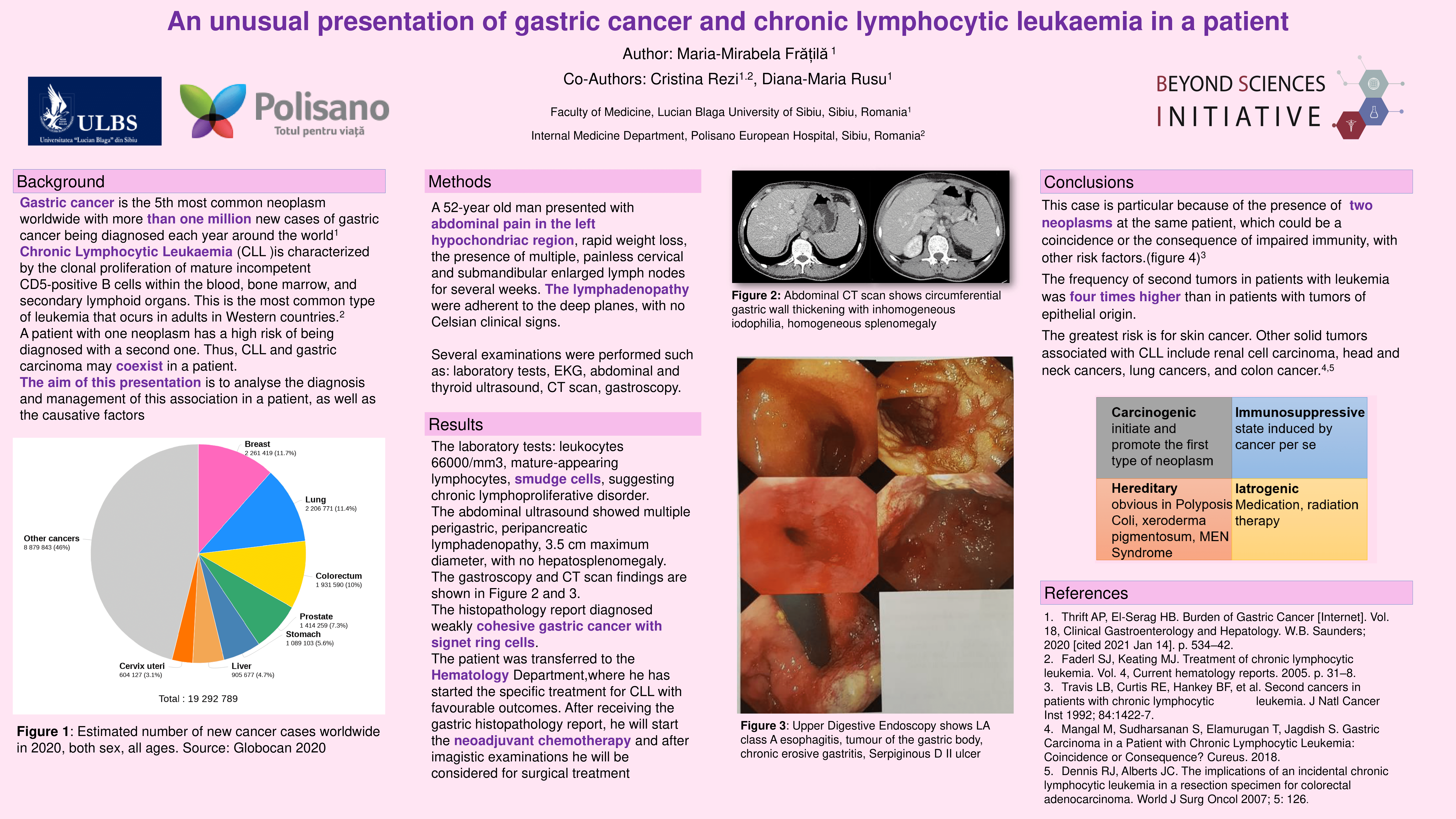Conference 2021 Poster Presentation
Project title
An unusual association of two neoplasm in a patient:gastric cancer and chronic lymphocytic leukaemia.
Authors and Affiliations
Maria-Mirabela Fratila1, Cristina Rezi1,2, Diana-Maria Rusu1
1. Faculty of Medicine, Medicine, Lucian Blaga University of Sibiu
2. Department of Internal Medicine, Polisano European Hospital
Abstract
Background
Chronic lymphocytic leukemia (CLL) represents a neoplasm of mostly CD5-positive, mature B-cells, but incompetent regarding their function. A patient with one neoplasm has a high risk of being diagnosed with a second one. Thus, CLL and gastric carcinoma may be present in the same patient. This association involves some serious therapeutic challenges. Some of the risk factors have already been studied, while others remain unknown. The aim of this presentation is to analyse the diagnosis and management of this association in a patient, as well as the causative factors.
Methods
We present the case of a 52-year old man without family history of cancer who presented at the Internal Medicine Department with abdominal pain in the left hypochondriac region, rapid weight loss, the presence of multiple, painless cervical and submandibular enlarged lymph nodes for several weeks. At palpation the lymphadenopathy were adherent to the deep planes, with no Celsian clinical signs. The laboratory tests showed: leukocytes 66000/mm3, mature-appearing lymphocytes, smudge cells, suggesting chronic lymphoproliferative disorder. The findings of the gastroscopy were: tumor of the gastric body, Hp negative chronic gastritis. The CT findings include circumferential gastric wall thickening with inhomogeneous iodophilia.
Results
The patient was moved to Hematology where he started the specific treatment for CLL with favourable outcomes, the lymphoadenopathy diminished considerably in size. Afterwards he received the histopathology report of the gastric tumor which showed weakly cohesive gastric cancer with signet ring cells. He started the neoadjuvant chemotherapy. After imagistic examinations he will be considered for surgical treatment of the gastric cancer.
Conclusions
This case is particular because of the presence of the two neoplasms at the same patient, which could be a coincidence or the consequence of impaired immunity, with other risk factors: carcinogenic, hereditary, immunosuppressive, iatrogenic. These findings are of utmost importance, since they can lead to early detection and better management patients with more than one neoplasm.

